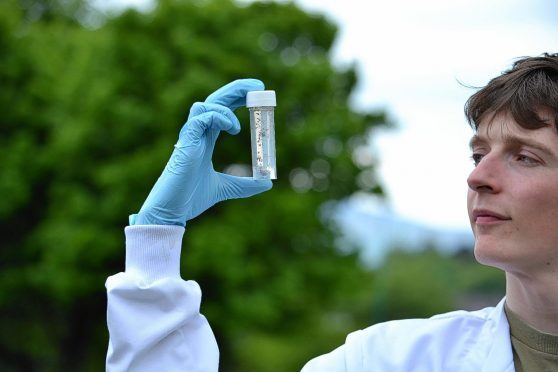The number of midges is officially up 100 percent on last year with a second bumper hatch due in weeks.
Leading midge expert Dr Alison Blackwell said one trap in Glencoe caught 1.3 million of the biting beasties last week – double the number in the same period last year when weekly catches were just 680,000.
“I think the warm spring and the recent rain has definitely brought them out. We’ve had reports from around Scotland today of menacing numbers out in force, including Kinlochleven, Glencoe, Oban and Loch Lomond,” said Dr Blackwell, who runs the official Scottish Midge Forecast.
“In fact one man reported not so much a cloud of midges at Kinlochleven as a ‘fog.’ Catches are up 100 percent and a second hatch is due in mid-July in what appears to be perfect conditions for them. It could be a record year.
“All over the Highlands is looking good midge territory this summer.
“The only thing that might help is if it is hot and dry – midges don’t like that kind of weather. They prefer it warm and wet.”
Earlier this year Dr Blackwell and her team calculated the total number of midges in the Highlands and Islands for the first time – after fearing their sums did not come up to scratch.
And the bad news is that there are an estimated 44.8 million biting beasties for every resident in the region.
Dr Blackwell said she had calculated there were 139.070 billion midges in the Highlands and Islands.
Half of them were females – only the female midge bites – but not every one of them makes it to ‘biting point.’
So the number of midges seeking a “blood meal” over the summer were around 21 billion.
Dr Blackwell, director of Dundee-based APS Biocontrol Ltd – makers of anti-midge repellent Smidge – said she was concerned that previous calculations of one square metre containing about 500,000 of the insects was wrong.
So she concentrated her research on the Highland and Islands – where most midges are found.
She also worked her calculations on the area of the region that was “midge rich.” That totalled 17,242 square kilometres containing midge-friendly pasture, bog, farmland and forestry – but excluded inland water, urban and coastal regions that have few of the insects.
